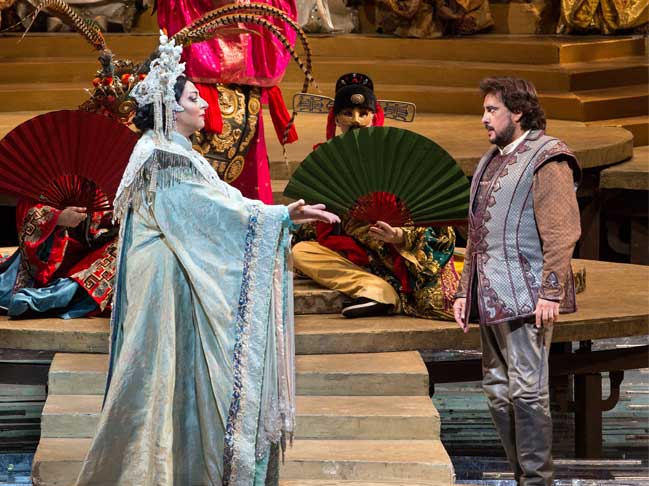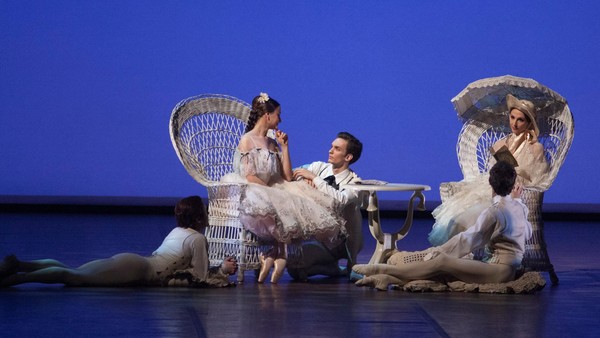
by Lidia Paulinska | Feb 28, 2016
The Maltese Falcon is a 1941 film noir written and directed by John Huston which marked Huston’s directorial debut. His screenplay was based on the novel of the same name by Dashiell Hammet, the great American mystery writer known for his hard-boiled detective stories and the creation of one of cinema’s most enduring characters, Sam Spade, the detective in The Maltese Falcon played by Humphrey Bogart. Co-starring with Bogart was Peter Lorre and Sidney Greenstreet as Kasper Gutman, the “Fat Man,” who at 61 years old and 300+ pounds was making his film debut which won him a much-deserved Oscar nomination.
Interestingly, Bogart, Lorre and Greenstreet were to be reunited a year later in another Hal Wallis production: Casablanca. Ironically, Huston initially offered the role of Sam Spade to George Raft who turned it down because of the “inexperience” of the director.
And indeed as a director new to the craft, Huston made every effort to create an innovative, evocative and professional work on every level of production and he succeeded famously. For example, he planned every second of every shot to the most minute detail, shot-for-shot setups making sketches of every scene.* Much to Hal Wallis’ delight, the film came in on time and under budget and proved to be an instant success at the box office.
John Huston (1906 – 1987) of course went on to write the screenplays for the 37 films he directed, many of which are today considered classics. In addition to The Maltese Falcon he created The Treasure of the Sierra Madre (1948), Key Largo (1948), The African Queen (1951) and many others.
One of the outstanding innovations of The Maltese Falcon was the brilliant cinematography of Arthur Edeson who was influenced by German Expressionism brought to America by German cinematographers during the 1920’s, a production style which is apparent in Edeson’s use of below eye-eye-level shots (for example, the low angle shots of Sidney Greenstreet when discussing the Maltese Falcon) and strong angular compositions combined with low lighting to create menacing shadows, all in black, white, and shades of gray.
Another innovation and by-product of Expressionistic technique shared with Orson Wells’ Citizen Kane which also premiered in 1941, was the low camera shots showing for the first time the ceilings of rooms in which the action was taking place, a commonplace today, but revolutionary for its time. Alfred Hitchcock, who in turn influenced Francois Truffaut, was to employ many of these Expressionistic techniques in his seminal films.
Huston’s film is the third version of the novel, the first having been attempted in 1931 with the same title and the second, titled Satan Met a Lady, starring Bette Davis was offered as a light comedy. By common consensus, Houston’s “Falcon” justifiably stands out as the true classic and a lasting cinematic treasure.
by Lidia Paulinska and Hugh McMahon

by Lidia Paulinska | Feb 14, 2016
January, Fathom events – Franco Zeffirelli’s classic production of Giacomo Puccini’s Turandot was presented by the Metropolitan Opera on January 30, 2016 and seen throughout the world in cinemas in 70 countries on six continents, compliments of Fathom events: “The Met: Live in HD” series.
Puccini’s final opera was first presented at Teatro alla Scala in 1926, two years after he had died, leaving an unfinished score. Zeffirelli has succeeded brilliantly in spinning this rather improbable fairytale (but aren’t all fairytales improbable) into a beautifully super-stylized Chinese fable with a mies-en-scene complete with enormous pagodas and richly imposing court scenes complimented with characters magnificently and lushly costumed and all of this imposing spectacle more than adequately filling the challenging 60’ x 60’ yawn of the Met stage’s proscenium.
Regarding the musical component of this total theatre equation, Soprano Nina Stemme was well matched to the extraordinary vocal demands of the title role. Her Turandot was strong and compelling, almost Wagnerian in it’s scope. Ably succeeding in thawing this iconic ice queen was heroic tenor Marco Berti in the role of the indomitable Calaf, answering as he did the three riddles that guaranteed Turndot’s ultimate affection. And finally, Anita Hartig’s moving interpretation of the self-sacrificing Liu was informed by a delicate, lyrical pathos complimenting the hopelessness of her unrequited love for Calaf.
But ultimately it’s all about the music, isn’t it? For after all, the audience, 4,000 strong (it’s the largest opera house in the world) leave the auditorium humming that famous Act III show-stopper “Nessun dorma” and of course the very word auditorium does mean “hearing place.” But is it in fact just for listening? Perhaps not, for as we know the word theatre is from the Latin theatron meaning “seeing place.” So it’s actually all about both “hearing” and “seeing” … all about both Puccini and Zeffirelli! And what a wonderful “hearing” and “seeing” experience this Turandot was!
by Lidia Paulinska and Hugh McMahon

by Lidia Paulinska | Jan 31, 2016
January, Fathom Events – On January 24th, 2016, Fathom events presented the Bolshoi Ballet’s breathtaking, non-stop production of The Taming of the Shrew based on Shakespeare’s comedy, broadcast from Moscow to big screen cinemas throughout the United States.
The Bard’s tale deals with the beautiful Bianca who is much sought after by Lucento and many other suitors competing for her hand in marriage. However, she must wait until her older sister, the irascible and shrewish Kathrina is married first. Petrucio then comes on the scene, attracted by the reward offered by Katherina’s father to any man willing to marry his impossible daughter. Katherina, brilliantly interpreted by Ekaterina Krysanova, is eventually “tamed” by the determined Petrucio, masterfully performed by Vladislav Lantratov, who has taken up the challenge, thus winning the reward money and a new bride which in turn frees Bianca to marry a patient and grateful Luciento.
Choreographed by Frenchman Jean-Christophe Maillot especially for the celebrated and iconic Russian company, Maillot’s choreography is fast-paced yet subtle, simple yet filled with excitement and surprises, a smooth-flowing, circus-like style he characterizes as neither pure classical nor contemporary but uniquely “immediate” and existing in the moment.
The occasional frenetic movements of the dancers contrasted with moments of graceful, lyrical expression which might suddenly explode into breakneck athletic dancing bordering on the acrobatic, creates an excitement which is perfectly ignited by the powerfully poly-stylistic music of Soviet composer Dmitri Shostakovich, which not only serves to propel Kate’s frenzied, “shrewish” antics but also provides a driving force … a continuity and cohesiveness to the production.
Maillot’s Taming is imaginatively “book-ended” by the opening and closing scenes, the former functioning as a foreshadowing of the conflicts to come and the latter a peaceful expression of resolution and loving accord.
Before the curtain even opens to Act One, there enters a beautiful woman onto the stage in the role of a so-called “Housekeeper,” setting the “shrewish” tone of the act which is to follow by her overly-purposeful, condescending attitude. Dressed all in black and high-heels, she critically surveys the audience and the orchestra who are preparing to tune up. She then sits on the floor and slowly begins to remove her high-heels, methodically replacing them with pink ballet slippers, then slowly rising to once again peruse an intrigued audience, she begins to exit, suddenly pulling open the curtain to reveal a stark white stage with dancers poised to action! We are thus prepared to expect the unexpected.
By contrast, the final scene, again all in white, but this time conveying a tone of peace and tranquil camaraderie. Bianca now is married to Lucento and Kate to Petrucio and the entire cast delicately mime drinking tea, pinkies appropriately raised, to the tune of “Tea For Two”* from the 1925 Broadway musical No, No, Nanette, an absolutely perfect coda to an absolutely wonderful production. As with all of Shakespeare’s comedies, so to with the Bolshoi’s magic interpretation, love conquers all.
* N.B.: In 1927 Shostakovich wrote a new arrangement for “Tea For Two” after winning 100 rubles in a vodka-inspired bet he couldn’t re-orchestrate the song from memory in under one hour. He did it in 45 minutes! Bravo Maestro and bravo Bolshoi!
by Lidia Paulinska and Hugh McMahon

by Lidia Paulinska | Jan 29, 2016
January, Churchill Club Event – On January 21, 2016, the Churchill Club sponsored a discussion between Michael Lewis, celebrated journalist and author of the best-selling Flash Boys: A Wall Street Revolt, and Brad Katsuyama, “hero” of the book and co-founder and CEO of IEX (Investors Exchange), a stock exchange dedicated to investor protection against unscrupulous stock market manipulations. The discussion focused on Mr. Lewis’ 2014 book, and was ably moderated by Rami Branitzky of Sapphire Ventures. The event was presented to a packed house at the Computer History Museum in Mountain View, California, appropriately adjacent to a sprawling Google campus.
The central issue Mr. Lewis and Mr. Katsuyama addressed was high-frequency traders (HFT), the predatory villains on Wall Street who use their superior speed technology to take advantage of what’s called latency arbitrage , meaning they explore minuscule differences , like milliseconds (1,000th of a second), in the time it takes various traders and markets to receive data and then execute orders. The resultant latency arbitrage forces normal, i.e., slower traders, to pay more and the fastest traders make the most money. These tiny delays allow high-speed traders to see a price fluctuation on one exchange (there are 11 public stock exchanges) and then quickly send an order to another market that it knows updates its prices more slowly, hoping to grab orders just sitting there at stale prices. Mr. Katsuyama’s IEX prevents so-called stale quote arbitrage by using electronic “speed bumps” to slow down all new orders and thus create a level playing field.
At one point in the discussion, Mr. Lewis expressed surprise that there seems to be little if any public outcry regarding some of the revelations in his books, like for example in The Big Short and in Flash Boys that expose a rigged stock market abetted by crooked banks. But he claims what most astonished him were the responses he got on many college campuses where rather than displaying outrage at the systemic inequities in our financial system, the students seemed more interested in finding out how they too could get in on the action and make big bucks themselves!
by Lidia Paulinska and Hugh McMahon

by Lidia Paulinska | Jan 18, 2016
Georges Bizet (1838-1875) the renowned French composer best known for his ground-breaking opera Carmen which premiered in Paris in1875 and is indisputably one of the most popular operas of all time.
Exactly three months after it’s opening night however, and on his sixth wedding anniversary, Bizet died of a heart attack at the age of 36 as a result of a chill he contracted after a swimming competition. Unfortunately, Carmen had not been well received initially since it was the first time a major opera realistically depicted everyday characters in leading roles rather than the traditional subject matter featuring the lives of royalty or mythological figures. Carmen herself, for example, is a cigarette-smoking, Gypsy factory worker of questionable virtue and this definitely did not set well with the opera-going public of the time.
Twelve years prior to Carmen in 1863, Bizet had composed another opera, Les Pecheurs de Perles (“The Pearl Fishers”), traditionally considered to be a minor effort and roundly criticized for it’s poor libretto and lack of any rousing arias while acknowledging adequate choric offerings. And although these shortcomings seem to hold true to this day, nonetheless, New York’s Metropolitan Opera succeeded in staging a captivating and often scenically stunning production viewed by thousands of opera lovers in neighborhood theaters throughout the U.S. thanks to Fathom Events and The Met: Live in HD series, currently celebrating it’s 10th Anniversary.
The scene is a pearl-diving village in the Far East, presumably Sri Lanka, and the plot deals with Leila, a Hindu virgin priestess and two men Zurga and Nadir who are vying for her affections. In this traditional love triangle, Nadir, played by tenor Matthew Polenzani, triumphs and he and Leila, depicted my mezzo soprano Diana Damrau, escape a fated death as baritone Mariusz Kwiecien as the vengeful Zurga, burns down the village in a rage of jealous spite.
All of the players perform credibly, perfectly vocalizing Bizet’s Romantically derivative yet rather engaging score, but the scene-stealer is the scenic values themselves. The set is appropriately functional and admirably serves the demands of the production, but the real spectacle is the stunning computer generated projections thanks to the magical wizardry of 59 Productions who are credited with production design. The opening scene for example is an underwater projection which takes up the entire proscenium of the Met stage and superimposed on the screen are two pearl fishers, actually ballet dancers supported by invisible cables a la Cirque de Soleil, who appear to be rhythmically swimming in a deep blue “ocean,’ complete with bubbles and rays of sunlight streaming through it’s depths. Sergei Diaghilev, the iconic Russian empresario who in 1909 founded the Ballets Ruses, was once asked by a set designer what he wanted by way of scenery, to which Diaghilev replied, “Astonish me!” and that’s exactly what the production design team succeeded in doing in this captivating production. We were astonished!
On balance, a valuable and entertaining theatrical experience and an opportunity to witness a pearl of an opera delicately extracted from an oyster shell of near oblivion in a lovely offering by The Met. Thank you and Bravo!
by Lidia Paulinska and Hugh McMahon

by Lidia Paulinska | Dec 10, 2015
The very words “Bolshoi Ballet” strike awe in the hearts of every devoted balletomane world-wide, and justifiably so. And on December 6, 2015, the world was indeed rewarded with an outstanding production of John Neumeier’s classic The Lady of the Camellias direct from Moscow compliments of Fathom Events, featuring the exquisite Svetlana Zakharova in the lead role of Marguerite, the consumptive courtesan who falls tragically in love with the young Armand, performed with style and strength by Edvin Revazov. This is a true ensemble production in which every element is essential to the outstanding success of the whole.
The story is a familiar one of star-crossed lovers based on Alexandre Dumas’ 19th century novel and operatically immortalized in La Traviata. Neumeier’s lyrical interpretation possesses a meditative, almost hypnotic quality as his dancers flow magnificently through Frédéric Chopin’s exquisitely romantic music, performed on pianos both on stage and in the orchestra pit and backed by the Bolshoi Theatre Orchestra under the able direction of Pavel Sorokin.
This is a relatively brief, beautifully-paced ballet, running as it does in three, forty-five minute acts with two twenty-five minute intermissions. Because of this compactness, the audience is left in the end with a sense of peaceful contentment due in part to the work’s magically contemplative pace which mitigates to some degree the tragic nature of the storyline. The sheer beauty of the movement, the music, and the entire miss en scene imparts to us a serenity that defies analysis and lies beyond critical judgement; we select from the experience what we will, meditating on the aesthetics and making them our own. And that is the sign of a true classic.
Page 8 of 10« First«...678910»





